AUDIOMAT MAESTRO DIGITAL TO ANALOG CONVERTER
| AUDIOMAT MAESTRO DIGITAL TO ANALOG CONVERTER |
| Poetry In Motion |
|
|
|
November 2006 |
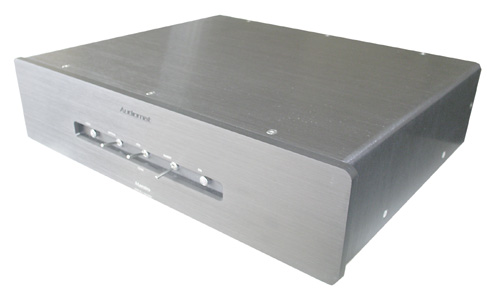
“At Great Pond
the sun, rising,
scrapes his orange breast
on the thick pines,
and down tumble
a few orange feathers into
the dark water. On the far shore
a white bird is standing
like a white candle-
or a man, in the distance, in the clasp of some meditation-
while all around me lilies
are breaking open again
from the black cave of the night.”
(Excerpt from “At Great Pond,” by Mary Oliver)
As the house lights dim at Scullers Jazz Club in Cambridge, Massachusetts, Denny Zeitlin takes a seat at his piano, alongside his band mates Buster Williams on bass and Matt Wilson on drums. The packed house is hushed as everyone anticipates the first notes from this formidable jazz talent, known for his creative compositions and soaring, unpredictable improvisations. Zeitlin begins by not playing the piano’s keys at all. Instead, he reaches inside the piano to pluck its inner strings, creating a few solitary, reverberating notes. He then proceeds to take a soft drum mallet to strike these same inner strings, projecting a huge crash of string color into the hall. Meanwhile, Buster Williams has taken up his bass and runs his fingers up and down its strings to create an eerie pattern of taps and scrapes. At his drum kit, Mat Wilson gently taps some tiny bells and wind chimes to stir in an Asian influence and then begins to gently scrape his fingernails on the surface of his snare creating a sound like one traversing a dry, crunchy surface. Within this cacophony of sounds and textures there is something familiar: is it the wind blowing gently through open spaces in an early morning? Indeed, this is “Dawn; Gathering,” the introduction to Zeitlin’s composition, “Slickrock,” the centerpiece of his 2004 recording by the same title on the Maxjazz label [Maxjazz 209]. Zeitlin composed this piece after being inspired by his mountain bike trips with his wife to Utah’s rugged, desolate terrain. Along the way in this live musical journey, we sense the rising altitude and quickening heartbeats of the riders, the pleasure of the open path from early morning to late afternoon, and tumbles and accidents amongst sharp rocks and thorns. Zeitlin is a master at creating unpredictable chromatic runs and patterns crisscrossing on his piano to tell this story of bones, sinew and sweat, while Williams and Wilson follow at a companion’s pace, adding their own creative percussion and bass foundation.
Similar to the wonderful poetry of Mary Oliver, (whose excerpt cited above uses brilliant imagery to transport the reader to the shores of that imaginary pond), Zeitlin’s musical composition transports us to a physical place, Utah’s Slickrock, and his artistic exploration within that vision. Michael Kimmelman, in his recent book, The Accidental Masterpiece (Penguin Press 2005) states that “what makes any art good is partly its power to proliferate as a variable memory, an intangible concept, filtered through individual consciousness.” We read a poem, see a painting or listen to Zeitlin’s unique music and we take away a memory of it, “a mental seed planted by the artist”, which is reproduced in as many different variations as the number of people in whom the memory exists. Thus, Kimmelman observes: “art promises wonderment – an access to a realm beyond the everyday, through the experience of which we may understand the everyday better.”
Likewise, our digital front end systems should ideally serve as the primary conduit to viscerally engage us in our favorite recorded music, getting us as close as possible to harvesting those “mental seeds” planted by the artist and their musical vision. This was my criterion for judging the C.E.C. TL 51XZ CD player and the Reimyo DAP 777 DAC in my recent survey of front-end components in these pages. I now report on my several months of listening to Audiomat’s Maestro DAC, (“Maestro”) partnered with my TL 51XZ as transport. The Maestro, like all Audiomat products (including its dynamic and reasonably priced integrated amp, the Arpege Reference) is distributed in the United States and Canada by Mutine, Inc. of Montreal, whose owner, Pascal Ravach, is as dedicated a musical lover as you will find. Although the Maestro is expensive, ($7,490) it offers a competitive price comparison with other reference one box CD players many of which cost more than the total price of a Maestro, a decent digital cable and possibly the CD player you now own to be used as a partnering transport. This is an intriguing possibility if one is open to auditioning a separate transport and DAC configuration, seeking the very best in what engineers can do today with the design of separate units, paying individual attention to the critical DAC in its own enclosure.
Of Derailers and Brakepads
The Maestro, like the precision mountain bike that Zeitlin might ride to negotiate Utah’s Slickrock terrain, offers mechanical and technical excellence of the highest order. According to company information, the Maestro was more than 20 years in the making, and is hand built and hand assembled in limited series in France. Two toroidal transformers feed two dedicated power supplies for both digital and analog sections. The Maestro does not utilize upsampling technology. Instead, Audiomat concentrates on the preservation of micro information by utilizing an ultra high-speed input stage and a digital circuit built around a Crystal CS 8414 demodulator (without any digital reformatting). This is followed in the circuit by a highest quality Burr Brown DF 1704 digital filter and four Burr Brown PCM 1704K converters in a specific analog output stage. The Maestro also utilizes 14 bipolar transistors, meticulously selected to work in pure Class A, combined with a seventh order passive analog filter offering precise phase rotation control to monitor ultra sonic frequencies that may disrupt the purity of the musical signal. On its exterior, the Maestro exudes a suave confidence in its gleaming heavy, brushed aluminum surface, with its nice touches of easy to reach front switches for operation, including a phase inversion switch. Around its back, it offers all of the usual digital inputs and outputs, space for a power cord of choice and excellent build quality. Audiomat states that the Maestro’s ergonomic design is the product of intensive microphonic behavior research, and it is delivered with solid brass nickel-plated cones to provide optimum extraction of vibrations. I found the Maestro sounded quite wonderful sitting on the top of my thick wood antique cabinet. However, when Joe Reynolds of Nordost came by and placed Nordost’s newest isolation devices (the Quasar Points) under the Maestro, the liquidity of its delivery was even more pronounced and free flowing. The Maestro also benefited from power cords and digital interconnects from Nordost, particularly their newest Brahma power cord and Silver Shadow digital interconnect. These amazing cables brought the Maestro to another level of enjoyment, particularly in highlighting its quickness of pace, its delicacy of timbres and its openness of presentation. Mutine recommends the Actinote line of cables partnered with the Maestro. I was equally enchanted with the Actinote’s rounder, slightly warmer and deeper presentation with the Maestro, even though it was a bit less open in the treble than with the Nordost cabling. Mutine also correctly advises that the Maestro can take several hundred hours before it fully reveals itself. I feel its evolution continues even after several months of listening on a regular basis.
Of The Promise of Wonderment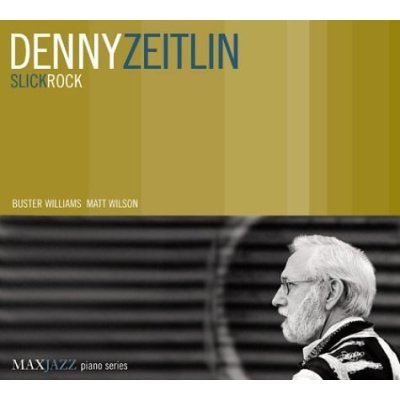 Coming home from Zeitlin’s live performance of “Slickrock” and listening to this same performance on disc with the Maestro now in place was an experience of simple joy and wonder as a music lover. The Maestro elevated my system’s digital front end to the point where I felt, in a profound way, viscerally connected to what was taking place before me in this composition. This is not to say that it reached the level of engagement as the live performance at Scullers. This can never be achieved. But what I have come to love about the Maestro is that it communicates on such an engaging musical plane that I was drawn that much closer to the brilliance of Zeitlin’s artistry that I had heard in his live performance. The key to the Maestro’s brilliance was its delivery of astonishingly natural timbres and inner life and details of the music. With just the C.E.C. TL 51XZ as front end, Zeitlin’s punctuation of runs on the piano were nicely transcribed, with a good sense of rhythm, pace and air. When the Maestro was added, there was a total transformation. It was the difference between perceiving Mary Oliver’s pond with a surface of water lightly blown in the wind, (with little contours and depth), verses with the Maestro, seeing the surface in all of its gradients and imperfections, with more waves, depth, contoured patterns and immediacy. Zeitlin’s dynamic movements on the piano, his wonderful use of pace and then silence and space, was vividly revealed for the first time. Here a twist, there a turn of quick phrase, a shocking silence and then a burst of more piano color and tension. Overtones lingered, with Zeitlin’s great percussive use of the piano clearly distinctive. Likewise, the Maestro delved into the cornucopia of inner and textured details presented by Wilson’s creative percussion on this piece: the hitting of small and large drums and surfaces with differing sticks and hands; the splash of cymbals and tiny bells; the clack of sticks together and all other inner details and timbres of using differing techniques and angles on a collection of percussion and surfaces. This combination of naturalness, ease of presentation, (with such a heightened presentation of textures and micro and macro details), was simply astounding. What an exhilarating ride alongside Zeitlin and his band mates!
Coming home from Zeitlin’s live performance of “Slickrock” and listening to this same performance on disc with the Maestro now in place was an experience of simple joy and wonder as a music lover. The Maestro elevated my system’s digital front end to the point where I felt, in a profound way, viscerally connected to what was taking place before me in this composition. This is not to say that it reached the level of engagement as the live performance at Scullers. This can never be achieved. But what I have come to love about the Maestro is that it communicates on such an engaging musical plane that I was drawn that much closer to the brilliance of Zeitlin’s artistry that I had heard in his live performance. The key to the Maestro’s brilliance was its delivery of astonishingly natural timbres and inner life and details of the music. With just the C.E.C. TL 51XZ as front end, Zeitlin’s punctuation of runs on the piano were nicely transcribed, with a good sense of rhythm, pace and air. When the Maestro was added, there was a total transformation. It was the difference between perceiving Mary Oliver’s pond with a surface of water lightly blown in the wind, (with little contours and depth), verses with the Maestro, seeing the surface in all of its gradients and imperfections, with more waves, depth, contoured patterns and immediacy. Zeitlin’s dynamic movements on the piano, his wonderful use of pace and then silence and space, was vividly revealed for the first time. Here a twist, there a turn of quick phrase, a shocking silence and then a burst of more piano color and tension. Overtones lingered, with Zeitlin’s great percussive use of the piano clearly distinctive. Likewise, the Maestro delved into the cornucopia of inner and textured details presented by Wilson’s creative percussion on this piece: the hitting of small and large drums and surfaces with differing sticks and hands; the splash of cymbals and tiny bells; the clack of sticks together and all other inner details and timbres of using differing techniques and angles on a collection of percussion and surfaces. This combination of naturalness, ease of presentation, (with such a heightened presentation of textures and micro and macro details), was simply astounding. What an exhilarating ride alongside Zeitlin and his band mates!
With such a potent combination, it comes as no surprise that on recordings that allowed for such, the Maestro excelled on reproducing the timbre of strings of all kinds, from Zeitlin’s piano to Jerry Garcia’s sweet guitar. 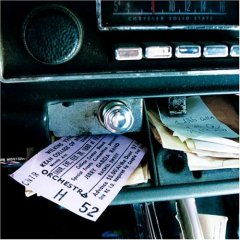 If you love Garcia at his height of mining delicacy and funk, grab a copy of Rhino Records re-mastering of the Jerry Garcia Band After Midnight, Kean College, 2/28/80 [Rhino 76536]. The Maestro never let up, delivering the pluck, timbre and natural texture of Garcia’s use of blues fragments and quick, delicate highs. It was like hearing his genius for the first time. How about Garcia’s compatriot – David Grisman and his eclectic quartet on their delectable recording Dawganova [Acoustic Disc 17]? Once again, the naturalness of delicate strums from Grisman’s mandolin on “Barkley’s Bug” was quick, pungent and naturally formed, visceral to the point of touch with the Maestro. The remarkable transparency of the Maestro afforded me a unique opportunity to explore how Grisman is a great sideman too, as on “Nature Boy,” where I could follow him in the background behind Joe Craven’s sweetly textured violin adding punctuations and calculated trills from his mandolin. Journeying further South, we also have the incomparable Jerry Douglas on the dobro, on Duane Allman’s “Little Martha”, from Lookout For Hope [Sugar Hill 3938].
If you love Garcia at his height of mining delicacy and funk, grab a copy of Rhino Records re-mastering of the Jerry Garcia Band After Midnight, Kean College, 2/28/80 [Rhino 76536]. The Maestro never let up, delivering the pluck, timbre and natural texture of Garcia’s use of blues fragments and quick, delicate highs. It was like hearing his genius for the first time. How about Garcia’s compatriot – David Grisman and his eclectic quartet on their delectable recording Dawganova [Acoustic Disc 17]? Once again, the naturalness of delicate strums from Grisman’s mandolin on “Barkley’s Bug” was quick, pungent and naturally formed, visceral to the point of touch with the Maestro. The remarkable transparency of the Maestro afforded me a unique opportunity to explore how Grisman is a great sideman too, as on “Nature Boy,” where I could follow him in the background behind Joe Craven’s sweetly textured violin adding punctuations and calculated trills from his mandolin. Journeying further South, we also have the incomparable Jerry Douglas on the dobro, on Duane Allman’s “Little Martha”, from Lookout For Hope [Sugar Hill 3938]. 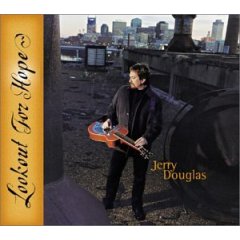 I had heard this cut numerous times on numerous players but there was nothing to prepare me for the sheer BITE and vastness of tonal colors that the Maestro invited from Douglas’ dobro. I was literally awash in his string tone, alternating from precision of short plucks to a great surge of color, with lots of delineated space never heard before. The Marc Vallee Trio, on their tactile recording,Hamadryade [Fidelio] was magnificently rendered by the Maestro, as each acoustic string of Vallee’s guitar had remarkable presence, delicacy and natural overtone. String bass, in the hands of the Cuban master, Orlando “Cachaito” Lopez [Self-Titled, World Circuit 79630] seemed more pungent and deep with the Maestro, (although the Reimyo DAP 777 was even better at bass extraction but lacked the visceral, natural “all of one piece” presentation of the Maestro from top to bottom).
I had heard this cut numerous times on numerous players but there was nothing to prepare me for the sheer BITE and vastness of tonal colors that the Maestro invited from Douglas’ dobro. I was literally awash in his string tone, alternating from precision of short plucks to a great surge of color, with lots of delineated space never heard before. The Marc Vallee Trio, on their tactile recording,Hamadryade [Fidelio] was magnificently rendered by the Maestro, as each acoustic string of Vallee’s guitar had remarkable presence, delicacy and natural overtone. String bass, in the hands of the Cuban master, Orlando “Cachaito” Lopez [Self-Titled, World Circuit 79630] seemed more pungent and deep with the Maestro, (although the Reimyo DAP 777 was even better at bass extraction but lacked the visceral, natural “all of one piece” presentation of the Maestro from top to bottom).
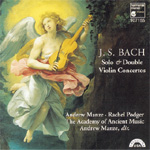 Similarly, on excellent classical recordings from Analekta, like the wonderful duet between cellist Yegor Dyachkov and pianist Jean Saulnier on Brahms Sonatas [Analekta 23167] or the Academy of Ancient Music’s serene playing with Rachel Podger on Bach Solo and Double Violin Concertos [Harmonia Mundi 907155], the Maestro consistently brought me into the action. It boldly offered intangibles like Dyachkov’s warm way with plucking his cello or the increased spaciousness and surge of dynamic warmth between the two solo violinists and the harpsichord on the Second Movement of Bach’s “Concerto in D Minor.” Nothing brittle, glaring or harsh here, just very neutral and natural sounding string tone, ebbing and flowing with great inner detail and the light sparks of the harpsichord.
Similarly, on excellent classical recordings from Analekta, like the wonderful duet between cellist Yegor Dyachkov and pianist Jean Saulnier on Brahms Sonatas [Analekta 23167] or the Academy of Ancient Music’s serene playing with Rachel Podger on Bach Solo and Double Violin Concertos [Harmonia Mundi 907155], the Maestro consistently brought me into the action. It boldly offered intangibles like Dyachkov’s warm way with plucking his cello or the increased spaciousness and surge of dynamic warmth between the two solo violinists and the harpsichord on the Second Movement of Bach’s “Concerto in D Minor.” Nothing brittle, glaring or harsh here, just very neutral and natural sounding string tone, ebbing and flowing with great inner detail and the light sparks of the harpsichord.
A special highlight should be made of the Maestro’s way with male vocalists, although its way with female vocalists was without peer as well. Ever since I heard the blues great John Hammond perform live with just guitar and harp, I have been exploring the vocal grit, baritone and bass of great male vocalists. The Maestro has been my erudite guide in this passion. You probably know Hammond’s deep, tactile voice on the bass plunging great recording of Wicked Grin (Pointblank 72438] but do you know of Little Hatch, the harp marvel of Kansas City? 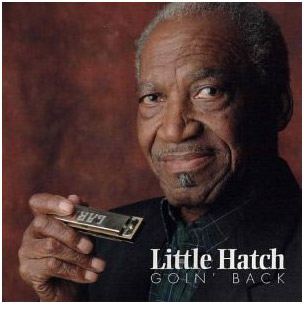 Putting on Hatch’s “Woke Up This Morning” from Goin’ Back[Acoustic Sounds APO 2007] put the Maestro up to the task to provide Hatch’s natural gut wrenching baritone with a remarkable sense of tactile texture and presence. From the smooth, liquid vocal delivery of Art Halperin on his Beatlesque pop of Simplicity [Sword In The Stone Records.com] to the weathered gravity of Warren Zevon on his soaring version of “Knockin’ On Heaven’s Door” from The Wind [Artemis 51156], the Maestro presented a truly visceral, tactile and engaging musical experience of the most genuine kind I have heard from this wide range of vocalists.
Putting on Hatch’s “Woke Up This Morning” from Goin’ Back[Acoustic Sounds APO 2007] put the Maestro up to the task to provide Hatch’s natural gut wrenching baritone with a remarkable sense of tactile texture and presence. From the smooth, liquid vocal delivery of Art Halperin on his Beatlesque pop of Simplicity [Sword In The Stone Records.com] to the weathered gravity of Warren Zevon on his soaring version of “Knockin’ On Heaven’s Door” from The Wind [Artemis 51156], the Maestro presented a truly visceral, tactile and engaging musical experience of the most genuine kind I have heard from this wide range of vocalists.
The Road Home
The Maestro is at the pinnacle of what I have heard from digital playback utilizing the criterion of musical engagement in my favorite recordings, and the delight in discovery that it brings. If you already have a player that would make an excellent transport, a top performing digital cable like the Silver Shadow from Nordost or Actinote and have been saving to make a substantial investment for the future in a state of the art CD player, take a listen to the Maestro. It will transport you to Mary Oliver’s creative vision of that figure across the pond “clasped in meditation” or join in the joyous abandon of Zeitlin’s musical vision and ride.
Nelson Brill
_________________
Maestro Specifications:
Type: 24 bit/96kHz
Demodulator: Cystal CS 8414
Digital Filter: Burr Brown 1704
Multibit converters: Burr Brown PCM 1704K (4)
Transistors: 14 bipolar, pure Class A
Analog Filter: seventh order passive
Power supply: (2) 680,000 microfarads condensers; 400 microfarads in parallel
Output level: 2.8 volts
Digital Inputs: 1 RCA, 1 Toslink, 1 XLR
Analog Output (RCA): 1 unbalanced
Analog Output (XLR): 1 balanced
Available Finishes: brushed aluminum; anodized black
Warranty (US): 90 days; extended 2 years
Weight: 33 lbs.
Dimensions (inches): 17.3 (w) x 5.1 (h) x 14.2 (d)
Price: $7490.00
Company Information
Canada & USA Distribution:
Mutine Inc.
Phone and Fax: (514) 221-2160
Website: www.mutine.com
E-mail: mail@mutine.com
![]()
Don’t forget to bookmark us! (CTRL-SHFT-D)
Stereo Times Masthead
Publisher/Founder
Clement Perry
Editor
Dave Thomas
Senior Editors
Frank Alles, Mike Girardi, Russell Lichter, Terry London, Moreno Mitchell, Paul Szabady, Bill Wells, Mike Wright, and Stephen Yan,
Current Contributors
David Abramson, Tim Barrall, Dave Allison, Ron Cook, Lewis Dardick, John Hoffman, Dan Secula, Don Shaulis, Greg Simmons, Eric Teh, Greg Voth, Richard Willie, Ed Van Winkle, Rob Dockery, Richard Doran, and Daveed Turek
Site Management Clement Perry
Ad Designer: Martin Perry





Be the first to comment on: AUDIOMAT MAESTRO DIGITAL TO ANALOG CONVERTER